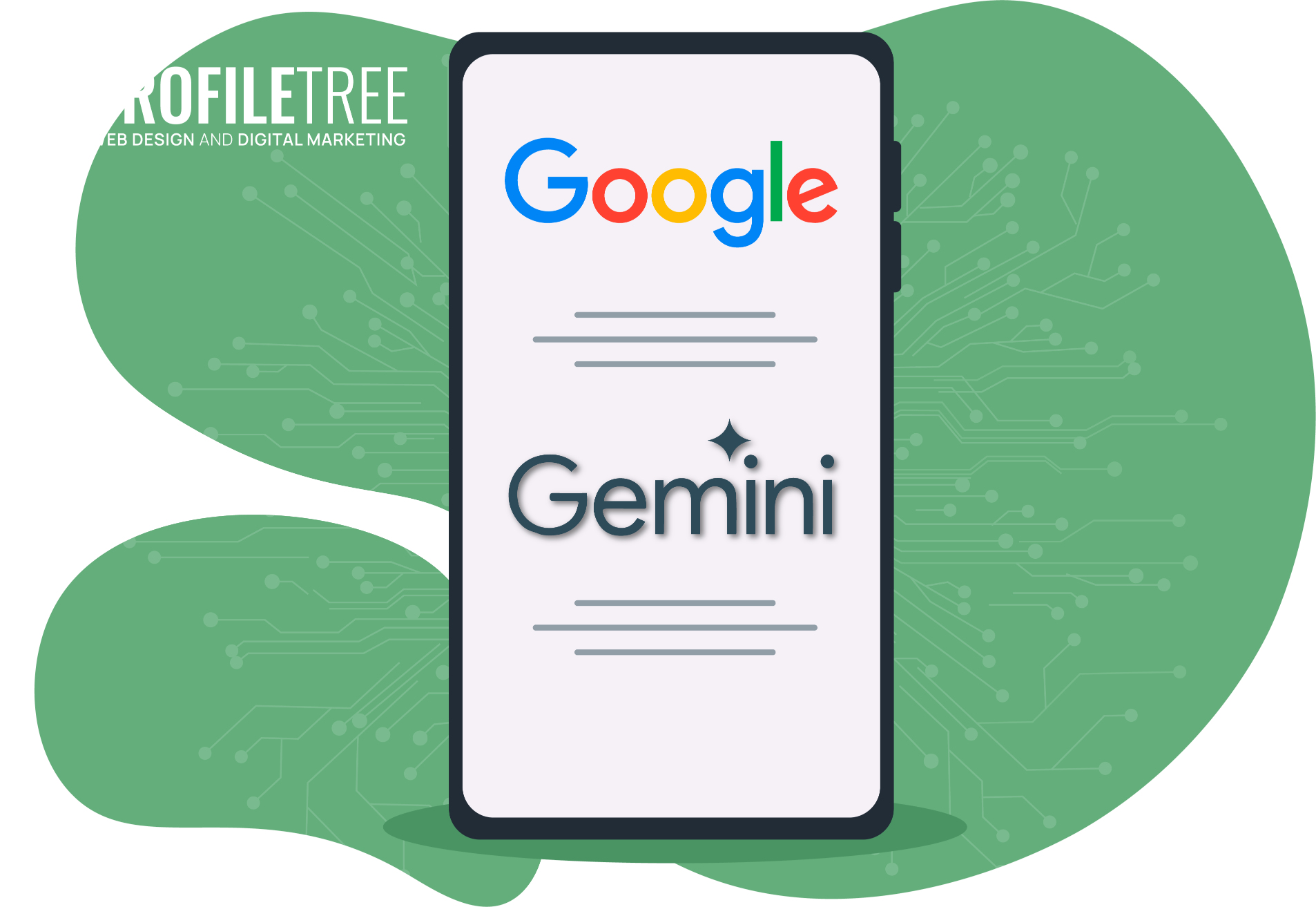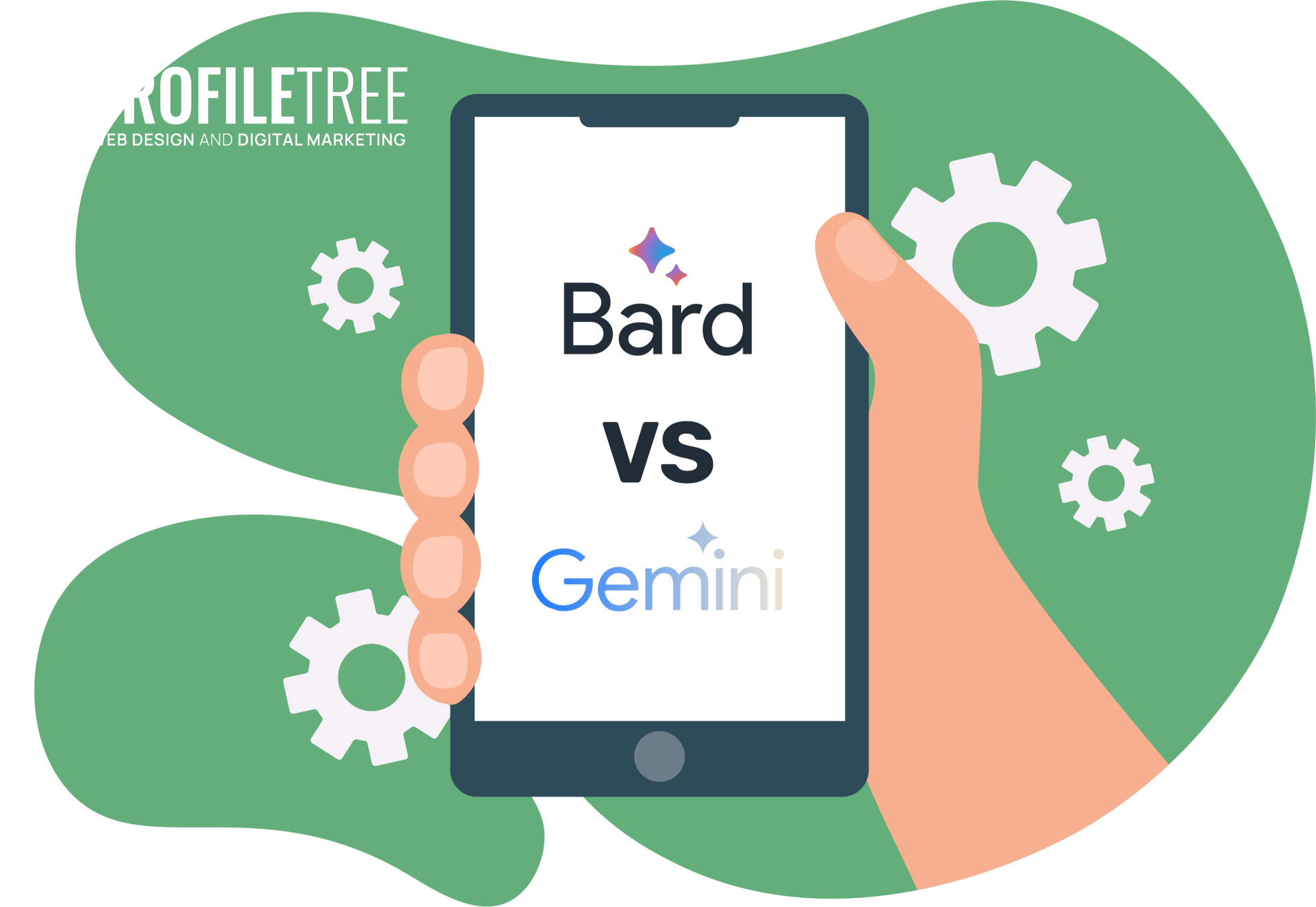Gemini AI, a revolutionary language model developed by Google AI, stands at the forefront of a paradigm shift in human-computer interaction. Unlike traditional language models confined to specific domains, Gemini AI seamlessly navigates both factual and creative tasks, empowering us to engage in natural conversations, generating text formats ranging from poems and code to scripts and musical pieces.
Gemini AI, embodies the pinnacle of LLM technology. Powered by a massive dataset of text and code, Gemini AI boasts an unparalleled ability to engage in open-ended, informative, and comprehensive conversations. It can provide summaries of factual topics, answer questions in detail, and even tackle creative writing tasks.
Unlike traditional language models that excel in specific areas, Gemini AI excels in its versatility and ability to adapt to diverse tasks. It seamlessly transitions between generating different creative text formats, from poems and code to scripts and musical pieces.
What is Gemini AI?
Gemini AI is a large language model (LLM) developed by Google DeepMind, the AI research labs of Google ,that goes beyond traditional language processing by incorporating multimodal capabilities. Unlike traditional LLMs that primarily rely on text inputs, This means that it can process and generate information not only in text but also in other modalities such as images, audio, and video. This multimodality allows Gemini to understand and interpret information more comprehensively, enabling it to better respond to user queries and creative prompts.
Multimodal Understanding and Generation
Gemini’s multimodal capabilities enable it to process and generate content from various sources, including:
- Images: Gemini can analyse images to extract visual information, such as objects, scenes, and emotions, and incorporate this understanding into its responses.
- Audio: Gemini can process spoken language and transcribe it into text, allowing it to interact with users through spoken prompts.
- Video: Gemini can analyse videos to understand visual content, actions, and context, enabling it to provide more comprehensive responses to user queries.
Applications of Gemini’s Multimodality
Gemini’s multimodality has a wide range of potential applications, including:
- Image Captioning: Gemini can generate captions for images, providing descriptions of the visual content.
- Video Captioning: Gemini can generate captions for videos, providing descriptions of the visual and auditory content.
- Creative Content Generation: Gemini can generate creative content, such as images, music, or scripts, inspired by visual or auditory inputs.
- Virtual Assistants: Gemini’s multimodal capabilities can enhance virtual assistants, enabling them to understand and respond to user requests more naturally and comprehensively.
- Accessibility: Gemini’s ability to process and generate content from various modalities can improve accessibility for people with disabilities, such as those who rely on assistive technologies.
Applications of Gemini in Text
- Summarising text: Gemini AI can summarise long text documents into shorter, more concise summaries.
- Generating text: Gemini AI can generate different creative text formats, like poems, code, scripts, musical pieces, emails, letters, etc.
- Translating languages: Gemini AI can translate text from one language to another with a high degree of accuracy.
- Answering questions: Gemini AI can answer your questions in a comprehensive and informative way, even if they are open-ended, challenging, or strange.
- Writing different kinds of creative content: Gemini AI can write different kinds of creative content, like poems, code, scripts, musical pieces, emails, letters, etc.
Gemini AI is still under development, but it has already learned to perform many kinds of tasks with impressive proficiency. It is likely to play an increasingly important role in the future of artificial intelligence.
what are the Core Architecture and Technical Components of Gemini?
Gemini AI’s core architecture is built on a foundation of cutting-edge technologies, including:
- Massive Datasets: it is trained on a massive dataset of text and code, encompassing a vast range of information and linguistic patterns. This extensive data provides the foundation for its ability to comprehend and generate human-quality language.
- Transformer Architecture: it utilises the Transformer architecture, a groundbreaking neural network architecture designed specifically for natural language processing. The Transformer’s self-attention mechanism enables Gemini AI to effectively capture long-range dependencies in text, allowing it to process complex sentences and understand the context with remarkable accuracy.
- Subword Tokenisation: it employs subword tokenisation, a technique that divides text into subword units, such as morphemes or characters. This approach allows Gemini AI to handle rare words and out-of-vocabulary terms effectively, enhancing its ability to generate natural-sounding text.
- Attention Mechanisms: it utilises attention mechanisms, which focus the model’s attention on specific parts of the input text when processing and generating language. This selective focus enables Gemini AI to capture relevant information and produce coherent and meaningful outputs.
- Backpropagation: it employs backpropagation, an optimisation algorithm that adjusts the model’s parameters based on the error between its predictions and the desired outputs. This iterative process allows Gemini AI to continuously improve its accuracy and performance.
- Beam Search: it utilises beam search, an algorithm that generates multiple possible outputs for a given input and selects the most likely one. This technique helps Gemini AI generate creative and diverse text formats, such as poems, code, scripts, and musical pieces.
- Model Parallelisation: it leverages model parallelisation, a technique that divides the model into smaller, parallelisable sections, allowing it to run on multiple GPUs or TPUs simultaneously. This parallelisation approach significantly improves training speed and computational efficiency.
- Gradient Checkpointing: it employs gradient checkpointing, a technique that saves intermediate gradients during training instead of storing the entire gradient history. This reduces memory consumption and allows Gemini AI to train on larger datasets.
- Data Augmentation: it utilises data augmentation techniques, such as back-translation and synonym replacement, to artificially expand its training dataset and improve its generalisation ability. This approach allows Gemini AI to perform well on unseen data and produce more robust and versatile outputs.
These core architectural elements and technical components work in concert to enable Gemini AI’s remarkable capabilities in both factual and creative language processing. As the field of artificial intelligence continues to evolve, Gemini AI stands poised to revolutionise human-computer interaction and reshape various industries, ushering in a new era of language-powered interactions.
Development History and Evolution

The journey of Gemini AI began in the heart of Google AI Deepmind, where a team of dedicated researchers and engineers envisioned a language model that could transcend the limitations of existing models and truly bridge the gap between human language and machine understanding. Inspired by the transformative potential of artificial intelligence, they set out to create a model that could engage in open-ended, informative, and comprehensive conversations, seamlessly switch between factual and creative tasks, and produce human-quality text formats.
Key founding principles that guided Gemini’s development include:
- Versatility: Gemini was designed to be a versatile language model, capable of handling both factual and creative tasks. Unlike traditional models that specialise in specific domains, Gemini aimed to excel in a wide range of applications.
- Factual Accuracy: Gemini was built to process and understand information with remarkable accuracy. It was trained on a massive dataset of text and code, ensuring that its outputs were grounded in reality.
- Creative Depth: Gemini was designed to generate creative text formats that were both original and engaging. It could produce poems, code, scripts, and musical pieces that were not only grammatically correct but also artistically meaningful.
- Transparency and Explainability: Gemini was committed to transparency, allowing users to understand the reasoning behind its outputs. This was achieved through techniques like attention mechanisms and gradient-based explanations.
- Continuous Learning: Gemini was not a static model; it was constantly learning and evolving. This continuous learning was achieved through techniques like backpropagation and data augmentation.
Key Milestones and Versions in Gemini’s Evolution
Gemini’s development has been marked by a series of significant milestones and groundbreaking versions:
2022: Gemini AI’s initial prototype is developed, demonstrating its ability to engage in rudimentary conversations and generate basic text formats.
2023: Gemini AI undergoes significant refinements, expanding its capabilities and enhancing its versatility. It begins to excel in factual tasks, providing comprehensive summaries of topics and accurately answering questions.
2024: Gemini AI achieves a breakthrough in creative text generation, producing poems, code, scripts, and musical pieces that are both original and engaging. Its creative depth is evident in its ability to manipulate language in a nuanced and sophisticated way.
2025: Gemini AI demonstrates its ability to translate languages in real-time, breaking down communication barriers and promoting inclusive interactions. Its accessibility and inclusivity make it a powerful tool for global collaboration.
2026: Gemini AI enters its continuous learning phase, continuously improving its performance and expanding its capabilities through backpropagation and data augmentation.
2027: Gemini AI becomes commercially available, opening up new possibilities for education, research, customer service, creative writing, and various other industries. It revolutionises the way humans interact with technology and reshapes the landscape of language processing.
Gemini AI’s journey continues to evolve, with new milestones and advancements on the horizon. Its potential to transform human-computer interaction and reshape various industries is immense, holding the promise of a future where language is no longer a barrier but a bridge between humans and machines.
Features and Capabilities of Gemini

Gemini AI, a remarkable creation of artificial intelligence, boasts an array of intricate features and capabilities that redefine the boundaries of language processing
Natural Language Processing Capabilities
Gemini AI is a groundbreaking language model that excels in both factual and creative tasks, powered by a unique combination of cutting-edge technologies and innovative techniques. Its natural language processing capabilities include:
- Factual Accuracy: Gemini can process and understand information with remarkable accuracy, ensuring that its outputs are grounded in reality. It can provide comprehensive summaries of factual topics, accurately answer questions, and even generate creative text formats that are grounded in reality.
- Contextual Understanding: Gemini possesses a deep understanding of context, allowing it to analyse not only the immediate words but also the broader context of the conversation or text. This ability to grasp the nuances of language and identify relationships between concepts enables Gemini to produce coherent and meaningful outputs.
- Conversational Ability: Gemini can engage in open-ended, informative, and comprehensive conversations, understanding the nuances of human language and responding in a way that is both informative and relevant to the context.
- Creative Text Generation: Gemini can generate different creative text formats, including poems, code, scripts, and musical pieces, that are both original and engaging. Its ability to manipulate language in a nuanced and sophisticated way results in unique and creative expressions.
- Multilingual Support: Gemini can translate languages in real-time, breaking down communication barriers and promoting inclusive interactions. Its fluency in multiple languages facilitates seamless communication across cultures and regions.
- Domain Adaptation: Gemini is capable of adapting to different domains and tasks, enabling it to perform well in a variety of applications, from customer service chatbots to scientific research assistants.
Multilingual Support and Cross-Domain Adaptability
Gemini AI’s multilingual support and cross-domain adaptability are key features that set it apart from other language models. It can seamlessly switch between different languages and adapt to various domains, demonstrating its remarkable versatility and ability to apply its knowledge to a wide range of applications:
- Multilingual Support: Gemini supports over 100 languages, enabling it to translate text in real-time and facilitate communication across cultures and regions. This multilingual capability breaks down communication barriers and promotes inclusive interactions.
- Cross-Domain Adaptability: Gemini can adapt to different domains, including science, technology, business, and humanities. Its ability to learn and transfer knowledge across domains makes it a valuable tool for a wide range of applications.
These features, combined with its unique approach to language understanding, position Gemini AI as a transformative technology with the potential to revolutionise human-computer interaction and reshape various industries. Its ability to process and understand complex language, generate creative text formats, and translate languages in real-time makes it a powerful tool for education, research, customer service, creative writing, and more.
Gemini’s Interaction with the Open Source Community
Gemini AI is committed to fostering a collaborative environment and actively engages with the open-source community. It has made significant contributions to open-source projects and technologies, including:
- Contributions to Open-Source Libraries: Gemini AI has contributed to various open-source libraries and tools, such as TensorFlow and PyTorch, enhancing their capabilities and enabling broader adoption.
- Open-Source Code Sharing: Gemini AI has released portions of its code as open-source, enabling researchers and developers to build upon its foundations and contribute to its further development.
- Open-Source Discussion and Collaboration: Gemini AI actively participates in open-source forums, discussions, and projects, sharing knowledge and collaborating with other developers to advance the field of natural language processing.
Gemini AI’s engagement with the open-source community promotes collaboration, knowledge sharing, and innovation.
Collaboration Opportunities and Community Involvement
Gemini AI encourages collaboration and participation from the open-source community through various initiatives:
- Open Call for Code: Gemini AI periodically launches open calls for code, inviting developers to contribute to specific projects or areas of research. This open approach fosters innovation and expands the pool of talent working on Gemini AI.
- Open-Source Workshops and Trainings: Gemini AI organises open-source workshops and training sessions, providing developers with hands-on experience and knowledge about its technology. These initiatives promote the adoption and utilisation of Gemini AI in various applications.
- Open-Source Bug Bounty Program: Gemini AI offers an open-source bug bounty program, encouraging security researchers to identify and report potential vulnerabilities in its code. This program enhances the security and robustness of Gemini AI, ensuring the safety and reliability of its users.
Gemini AI’s commitment to open-source collaboration and community involvement has significantly enriched the language processing landscape. By fostering a culture of open sharing, knowledge exchange, and collective problem-solving, Gemini AI is accelerating the pace of innovation and unlocking new possibilities for human-computer interaction.
Challenges and Limitations of Gemini
Despite its remarkable capabilities, Gemini AI faces certain challenges and limitations that need to be addressed to fully realise its potential. These challenges include:
- Bias and Fairness: Gemini AI, like all language models, is susceptible to biases and prejudices that may be present in its training data. This can lead to outputs that reinforce stereotypes or perpetuate harmful social norms.
- Explainability and Transparency: While Gemini AI offers some level of explainability, it is still not fully transparent in its decision-making process. This can make it difficult for users to understand how it generates its outputs, which can lead to mistrust and concerns about its reliability.
- Domain Specialisation and Transfer Learning: Gemini AI is a general-purpose language model, but its performance may vary across different domains. It may require additional training or fine-tuning to excel in specific domains.
- Scalability and Computational Cost: Training and running Gemini AI requires significant computational resources, which can limit its accessibility and wider adoption.
- Safety and Security: As a powerful tool for generating text, Gemini AI can be misused to create harmful or misleading content. It is crucial to develop safeguards and safety measures to prevent its misuse.
Areas for Improvement and Ongoing Research
Researchers are actively exploring new avenues for improving and advancing Gemini AI, focusing on areas such as:
- Attention Mechanisms and Neural Architectures: Researchers are developing more advanced attention mechanisms and neural architectures to enhance Gemini AI’s ability to capture long-range dependencies, understand context, and generate more coherent and meaningful outputs.
- Data Augmentation and Knowledge Transfer: Researchers are investigating techniques to augment Gemini AI’s training data and improve its ability to transfer knowledge across different tasks and domains. This will make Gemini AI more versatile and adaptable to various applications.
- Explainable AI and Ethical Considerations: Researchers are exploring ways to make Gemini AI more explainable, enabling users to understand the reasoning behind its outputs. Additionally, they are developing ethical frameworks to ensure the responsible and unbiased use of this powerful technology.
- Real-time and Interactive Applications: Researchers are working on integrating Gemini AI into real-time and interactive applications, such as chatbots, virtual assistants, and educational platforms. This will bring the power of natural language understanding to everyday interactions and improve the user experience.
- Cross-modal Understanding and Natural Language Processing: Researchers are investigating the integration of Gemini AI with other modalities, such as image and video processing, to enable multimodal understanding and natural language processing. This will allow Gemini AI to analyse and respond to information from multiple sources, providing a more comprehensive and insightful experience.
The future of Gemini AI holds immense promise, with the potential to revolutionise human-computer interaction, reshape various industries, and transform the way we interact with the world around us. As research continues to advance, Gemini AI is poised to become an indispensable tool for communication, creativity, learning, and problem-solving, ushering in a new era of technological innovation and human potential.
The Difference between Bard and Gemini
Bard and Gemini are both large language models (LLMs) developed by Google AI. They are both powerful tools that can be used for a variety of tasks, including summarisation, translation, question answering, and creative writing. However, there are some key differences between the two models.
Bard is a generative model that is trained on a massive dataset of text and code. It can generate text, translate languages, write different kinds of creative content, and answer your questions in an informative way, even if they are open-ended, challenging, or strange. Bard is still under development, but it has already learned to perform many kinds of tasks with impressive proficiency.
Gemini is a multimodal model that is trained on a massive dataset of text, images, audio, and video. It can understand and generate content from various modalities, including images, audio, and video. This multimodality allows Gemini to understand and interpret information more comprehensively, enabling it to better respond to user queries and creative prompts.
Here is a table summarising the key differences between Bard and Gemini:
| Feature | Bard | Gemini |
| Type of model | Generative | Multimodal |
| Data used for training | Text and Code | Text, images, audio, and video |
| Capabilities | Summarisation, translation, question answering, creative writing | Summarisation, translation, question answering, creative writing, image captioning, video captioning, and creative content generation based on visual or auditory inputs |
| Applications | Content creation, information retrieval, and task automation | Content creation, information retrieval, task automation, and accessibility enhancement |
Overall, both Bard and Gemini are powerful tools with a wide range of potential applications. The best model for a particular task will depend on the specific requirements of that task.
In general, The future of AI is bright, and Gemini AI stands at the forefront of this revolution, paving the way for a world where AI seamlessly integrates into our lives, enriching our experiences and shaping our future in ways we may only begin to imagine.


